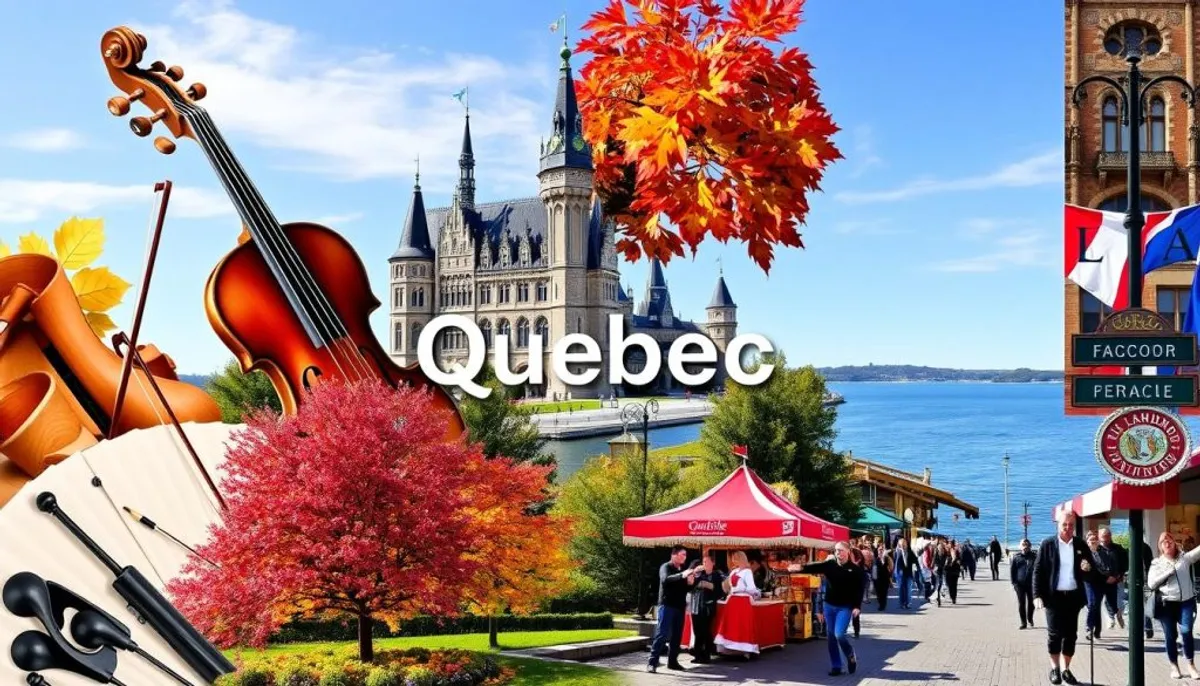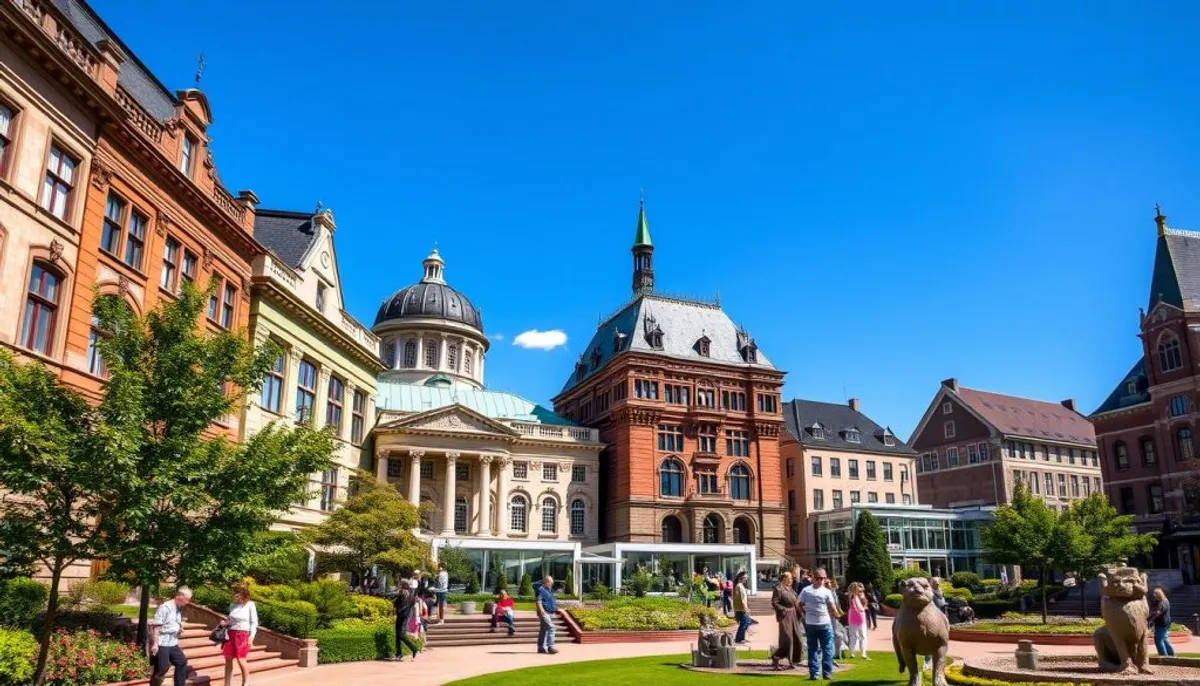The cultural identity of Quebec now asserts itself on the world stage. The book “When Quebec culture makes itself known to the world” tells this captivating evolution. Published by Alias in 2024, this 550-page work explores the cultural influence of Quebec over the decades.

The Quebec arts have experienced remarkable growth since the 1960s. The success of Gabrielle Roy in the United States, with 700,000 copies sold of “The Tin Flute,” illustrates this breakthrough. The book, sold for $35.95, tells the story of the transformation of French-Canadian culture into a modern and exportable Quebec culture.
Available in over 35 bookstores across Quebec, this book brings together contributions from 21 specialists. It offers a comprehensive overview of Quebec's cultural evolution, from Montreal to Trois-Rivières and Quebec City. The ISBN 9782924787878 allows for easy ordering.
The emergence of a modern Quebec cultural identity
The 1960s were crucial for the formation of a modern cultural identity in Quebec. This period, marked by the Quiet Revolution, saw the emergence of a new identity consciousness. It gradually replaced the term “French Canadian” with “Quebecois.”
The transition from “French Canadian” to “Quebecois”
The identity transformation occurred in a context of questioning traditional values. The magazine Cité Libre played a crucial role in this evolution. It criticized the regime of Maurice Duplessis and promoted a progressive vision of Quebec society.
The historical context of the 1960s
The 1960s were marked by intense ideological conflict. Progressive intellectuals sought to modernize Quebec, while traditional nationalists defended ancestral values. This period saw the emergence of the concept of “Great Darkness,” symbolizing the rejection of the authoritarian past.
The impact of the Quiet Revolution on cultural expression
The Quiet Revolution profoundly influenced Quebec's cultural expression. It allowed for the emergence of a modern culture, open to the world, characterized by craftsmanship and artisanal quality. This transformation manifested in literature, music, and visual arts, reflecting a proud and assertive new Quebec identity.
| Period | Identity | Characteristics |
|---|---|---|
| Before 1960 | French Canadian | Traditional values, religious influence |
| 1960s | Transition | Quiet Revolution, questioning |
| After 1960 | Quebecois | Modernity, cultural affirmation |
When Quebec culture makes itself known to the world
The international recognition of Quebec culture has been built gradually. Between 1840 and 1970, this unique identity emerged, reflecting the history and aspirations of Quebec. Cultural exportation has been essential in this process.
The Quebec society, populated relatively recently, has developed over three centuries. It has developed unique demographic behaviors and social structures. The sociocultural elites, emerging as early as the 18th century, contributed to the rise of education and professions rooted in French traditions.

The evolution of Quebec culture has been marked by a divide between high culture and popular culture. The elites aimed to create a Francophone space inspired by European cultures. At the same time, the working classes adopted a more “American” culture. This duality enriched the Quebec cultural identity, giving it a unique dimension.
| Stage | Characteristics |
|---|---|
| Honeymoon | Enthusiastic discovery |
| Confrontation | Confusion, frustration, hostility |
| Adjustment | Progressive understanding |
| Bicultural ease | Comfortable navigation between cultures |
Quebec culture has made itself known through its openness to both the old and the new continent. This approach has helped to identify the discrepancies between the ambitions of the elites and the popular culture. It offers a rich and nuanced vision of Quebec identity on the international stage.
The major international breakthroughs of Quebec artists
The 1960s and 1970s mark a major turning point for Quebec culture on the international stage. This period sees the emergence of exceptional talents who proudly represent Quebec abroad.
Réjean Ducharme at Gallimard
Réjean Ducharme, a little-known Quebec writer, makes a remarkable entry into the Francophone literary world. His novel “L’Avalée des avalés” is published by Gallimard in 1966, a prestigious publishing house. This breakthrough paves the way for other Quebec authors on the international literary scene.
Success at the Spoleto Festival
In 1962, the exhibition “Modern Canadian Painting: 25 Years of Painting in French Canada” at the Spoleto Festival in Italy marks a significant moment. It presents Quebec art to a European audience, sparking interest in this vibrant artistic scene.
Quebec song at Sopot
Quebec song enjoys resounding success at the variety music festival in Sopot, Poland. Artists like Félix Leclerc and Gilles Vigneault showcase the richness of North American Francophone music. Their songs, imbued with Quebec identity, resonate with an international audience.
| Artist | Notable Work | International Impact |
|---|---|---|
| Réjean Ducharme | L’Avalée des avalés | Publication at Gallimard |
| Quebec Painters | Group Exhibition | Recognition at the Spoleto Festival |
| Félix Leclerc | My Country | Success at the Sopot Festival |
These international breakthroughs contribute to making Quebec culture known beyond borders. They lay the groundwork for global recognition for Quebec artists, opening the door to further successes in the following decades.
Cultural institutions as vectors of influence
Cultural institutions are essential for disseminating Quebec culture internationally. The House of Quebec in Paris, Quebec museums, and Expo 67 played a major role. They significantly increased the visibility of Quebec on a global scale.
The House of Quebec in Paris
The House of Quebec in Paris serves as a cultural link between Quebec and France. It acts as a showcase for Quebec artists, facilitating cultural exchanges in Europe. This contributes to the dissemination of Quebec culture on the continent.
The evolution of Quebec museums
Quebec museums have undergone significant transformation. The Musée national des beaux-arts du Québec, the Musée de la civilisation du Québec, and the McCord Museum have developed online educational resources. These efforts have brought culture closer to the public. They have also trained hundreds of artists, who have become the creative heart of Quebec.

The importance of Expo 67
Expo 67 was a turning point for the international recognition of Quebec. This event drew global attention to Quebec culture. It stimulated its influence on a worldwide scale. Expo 67 also inspired cultural policies aimed at investing 1% of the Quebec budget in culture.
International artist residencies have seen significant growth over the past twenty years. They have strengthened the cultural presence of Quebec abroad. Despite challenges, these initiatives enhance Quebec's international reputation. They promote artistic and intellectual exchanges.
Fields of excellence and recognition
Quebec culture stands out on a global scale, dominant in several artistic sectors. The Quebec theater, in particular, has established itself as a global reference. Works such as “Les Belles-Sœurs” by Michel Tremblay have captivated Francophone audiences in Europe.
Quebec poetry is distinguished by its originality and emotional depth. Figures like Gaston Miron and Anne Hébert have shaped Francophone literature with their unprecedented contributions, especially during the Greek Renaissance that influenced many literary movements.
The Quebec classical music, for its part, has also gained international fame. The innovative compositions of composers like Claude Vivier have been praised by critics around the world.
Quebec urban planning has also made an impression. Montreal, with its balance between old and modern architecture, attracts the attention of international specialists.
| Field | Example of Excellence | International Recognition |
|---|---|---|
| Theater | Michel Tremblay | Success in Francophone Europe |
| Poetry | Gaston Miron | Influence on Francophone literature |
| Classical music | Claude Vivier | Recognition from international critics |
| Urban planning | Montreal | Interest from global experts |
Conclusion
The cultural legacy of Quebec has asserted itself as a distinct phenomenon on the world stage. With 81.8% of its population favoring French, Quebec has managed to maintain its identity while opening up to international influences. This ability to navigate between two linguistic worlds, reinforced by the presence of 40.6% bilinguals, has greatly contributed to its global influence.
Quebec attracts an immigrant population due to its cultural influence. It is perceived as a peaceful, egalitarian society, offering unparalleled quality of life. Green spaces, cultural diversity, and the bilingualism of Montreal are major assets. This cultural richness, combined with democratic values and the protection of individual rights, strengthens newcomers' attachment to their new homeland.
Despite challenges, the future of Quebec culture appears promising. The recognition of the French language and political uncertainties remain challenges. Nevertheless, Quebec's unique identity, its universal healthcare system, and its social programs continue to attract and retain a diverse population. This ensures the sustainability and evolution of its cultural heritage on the world stage.
RelatedRelated articles


